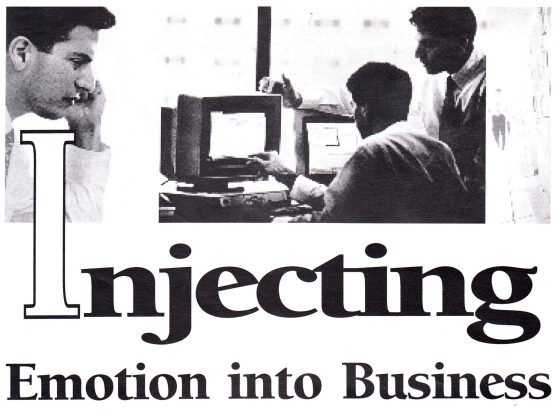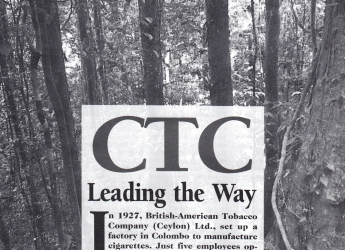
‘Paralysis by analysis’ is a sure-fire reason for corporate decay, says Sam Swaminathan.

When Mercedes Benz wanted to market their first motor car in the 1880s, they hired a market research firm to determine the demand for automobiles. The recommendations read, “The most optimistic estimate predicts that no more than 100 cars will sell in a year. No one will be willing to build roads just for the sake of automobiles.”
What do you think might have been the result of a market research study of demand for passenger planes in 1903 when Orville Wright made the first successful powered flight? In fact, in Britain, the news was carried by only one newspaper, the Daily Mail. Yet, on January 1, 1914 the St. Petersburgh-Tampa Airboat Line was formed to offer a scheduled passenger service by plane.
In the late 1950s, Xerox was strapped for cash, and offered to sell to IBM its technology for the first commercial copying machine, the 914. IBM was advised by Arthur D Little, who did a market research study, according to which even if the 914 captured 100 percent of the market for carbon paper, dittograph, and the hectograph, it was still not worth it. Xerox then decided to go ahead. The rest is history.
The power of the 914 did not lie in its ability to perform services beyond the reach of these technologies. People did not know that thirty copies of an existing document would ever be a need. Since thirty copies couldn’t be made easily and inexpensively, no one articulated doing so as a need!
Time and again, history tells us that trying to analyze and predict what the customer will want is a waste of time and money. The results are almost always wrong. Yet, companies pour millions of dollars analyzing trends and past performances.
The story repeats itself- be it cars, copiers, or cellular phones. The point is, none of these developments would have beneffited mankind, if market forecasts had been seriously pursued. Civilization would have blissfully remained in the dark ages.
So what lessons have companies learned from these facts? None. We have armies of analysts regurgitating data to death, and busy burying bright ideas of employees who don’t have enough clout within the organization. Yet companies as diverse as Silicon Graphics and Rubbermaid do just the opposite. These companies constantly inject emotion into their businesses.
Rubbermaid produces no less than 400 new products every year. In fact, a third of its annual sales of US$ 2 billion comes from products that are less than five years old. Where do the new product ideas come from? Straight from the office of the CEO, Wolfgang Schmitt. Among other things, Schmitt’s philosophy includes a zealous dependence on intuition and imagination, a closeness to nature, listening carefully to children, watching trees and plants, and so on.
In fact, he studies unfavourable trends more than favourable ones. He claims that his juices flow from emotion, not from analyses. This from a company that produces ordinary stuff like plastic buckets, low-tech toys, tools, and simple houseware.

You think this applies only to low-tech companies? Wait till you hear about hi-tech Silicon Graphics and its brilliant CEO, Ed McCracken. McCracken believes that in his business, long term. means one or two years. His views on the future”We don’t use yesterday’s technology…this rapid, chaotic rate of change will continue forever and will continue to accelerate. The capabilities that everyone will consider routine ten years from now will require extreme amounts of performance”. What does McCracken say about research? “A company can’t use traditional market research to pick up paradigm shifts. Its best technologists, its most creative R&D people, must be out there to see or sense firsthand what its most creative customers what we call our ‘lighthouse’ customers might want in the future”. Now that’s emotion for you.
Here’s another example of an idea that analysts would have killed at the first whistle. Rebecca Matthais is the President of a company with an unlikely name “Mothers Work”, built upon an even more unlikely (so any analyst would say) idea. Back in 1982, she was disgusted for not being able to find stylish maternity clothes to wear to work. By the way, she is a civil engineer. Realizing that there were many other women like her out there, she started off creating and selling designer maternity clothes. After a disastrous beginning selling via catalogue, she got in touch with her catalogue buyers to find out what was wrong. She soon discovered that many things were wrong-insufficient variety, poor catalogue design, etc. She quickly turned things around, used the power of technology to track offtake with a system called “Trendtrack” that ensures minimal stock holding, and tied it neatly to an overnight mail delivery system. Bingo! Sales boomed to US $44 million in 1993, with an 81% growth rate.
How do such things happen? By bringing emotion into your business. Trust your intuition, trust the intuition of your star performers, have a fanatical belief in experimentation, and finally, keep the analysts away. The truth is, you can only analyze the past; you need emotion to gaze into the future.
How about a quick inventory of all projects in your company suffering from the ‘paralysis by analysis’ syndrome? Aren’t we desperately in need of companies filled with emotion?



